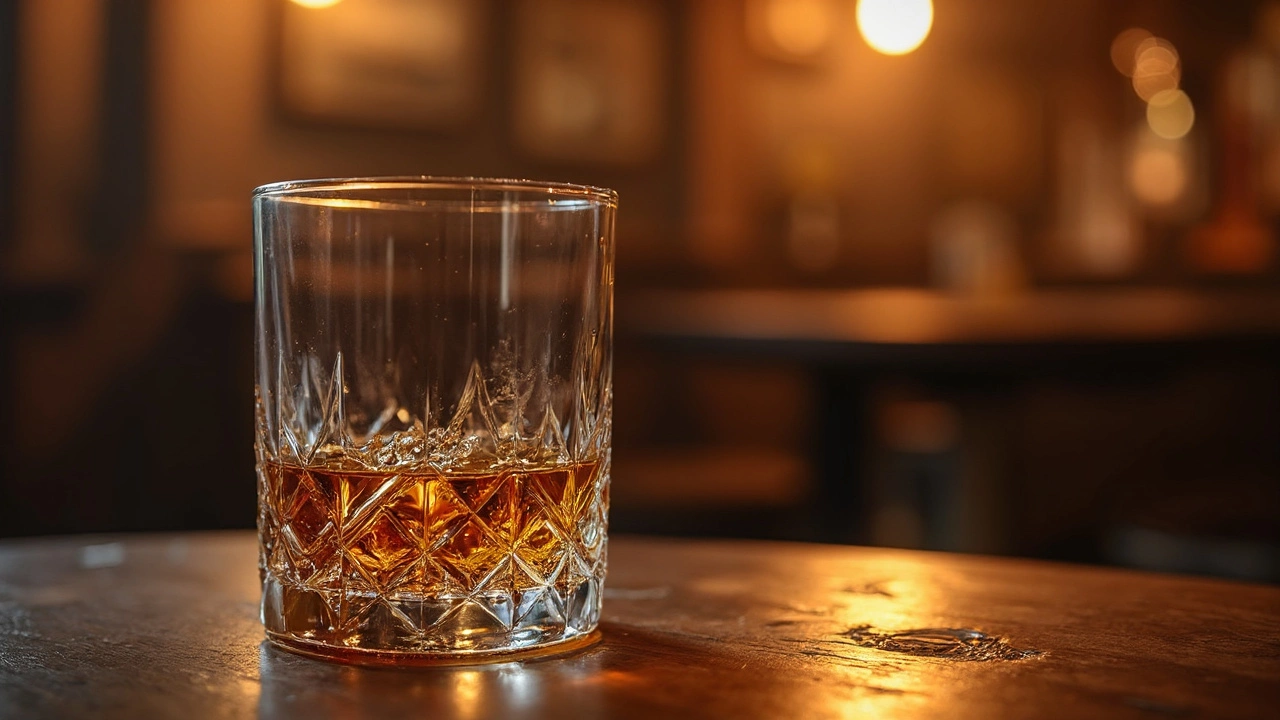Whiskey Legs – What They Are and Why They Matter
If you’ve ever watched a glass of whisky sit on the bar and seen streaks run down the side, you’ve seen "whiskey legs" (sometimes called "tear‑down"). Those droplets aren't just a pretty sight – they give you clues about the spirit’s quality, alcohol level, and even its age. In this guide we’ll break down the science, show you how to spot the legs, and explain what they tell you while you sip.
What Are Whiskey Legs?
When you tilt a whisky glass and let the liquid coat the inside, gravity pulls the liquid down. As it slides, tiny beads of liquid stay on the glass, forming lines that slowly drip back into the pool. The thicker and slower these lines, the more viscous the whisky is. Viscosity is mainly driven by alcohol content and any residual sugars or oils left from the barrel.
High‑proof whiskies (usually 45% ABV or higher) tend to have fast‑moving, clear legs because the alcohol thins the liquid. A lower‑proof, older whisky that spent extra time in a charred barrel will often have thicker, slower legs due to higher levels of congeners – the compounds that add flavor and body.
How to Use Whiskey Legs When Tasting
1. Swirl the glass. Hold the glass at a 45‑degree angle and give it a gentle swirl. Let the whisky coat the sides for a few seconds.
2. Watch the legs. Tilt the glass upright and observe how the liquid slides down. Count how many separate streams you see and note their speed.
3. Match the legs to the drink. Thick, slow‑moving legs usually point to a richer, more complex whisky – think sherry‑cask finishes or aged single malts. Quick, thin legs often indicate a lighter, younger spirit, which can be great for highball cocktails.
4. Combine with other cues. Legs are just one piece of the puzzle. Pair what you see with the nose and palate. If the legs suggest richness but the aroma feels thin, you might be looking at a high‑proof spirit that needs a few minutes of breathing.
5. Practice with different whiskies. Grab a few bottles – a 12‑year single malt, a 40‑year bourbon, and a 70‑proof rye. Compare the legs side by side. You’ll start to see patterns quickly.
Remember, legs aren’t a measure of “good” or “bad.” They simply describe the physical properties of the liquid. A whisky with fast legs can be wonderfully crisp and perfect for a summer cocktail, while a slow‑legged dram might be the ideal sipping whisky after dinner.
When you next pour a dram, take a second to watch the legs. It’s a cheap, visual test that adds a layer of fun and can steer you toward the right drink for the moment. Whether you’re at a bar, a tasting room, or your own kitchen, the legs give you a quick snapshot of what’s inside the glass.
So next time you’re staring at a glass of amber, don’t just sip – watch the legs, read the story, and enjoy the whisky even more.
Whiskey legs, also known as 'tears' or 'fingers,' are the streaks that form on the inside of a glass when you swirl your whiskey. They tell us more than just how pretty the glass looks. These mysterious lines can give insights into the whiskey's alcohol content and viscosity. Whether you're a newbie or a seasoned taster, understanding whiskey legs can enhance your drinking experience.
View Details

